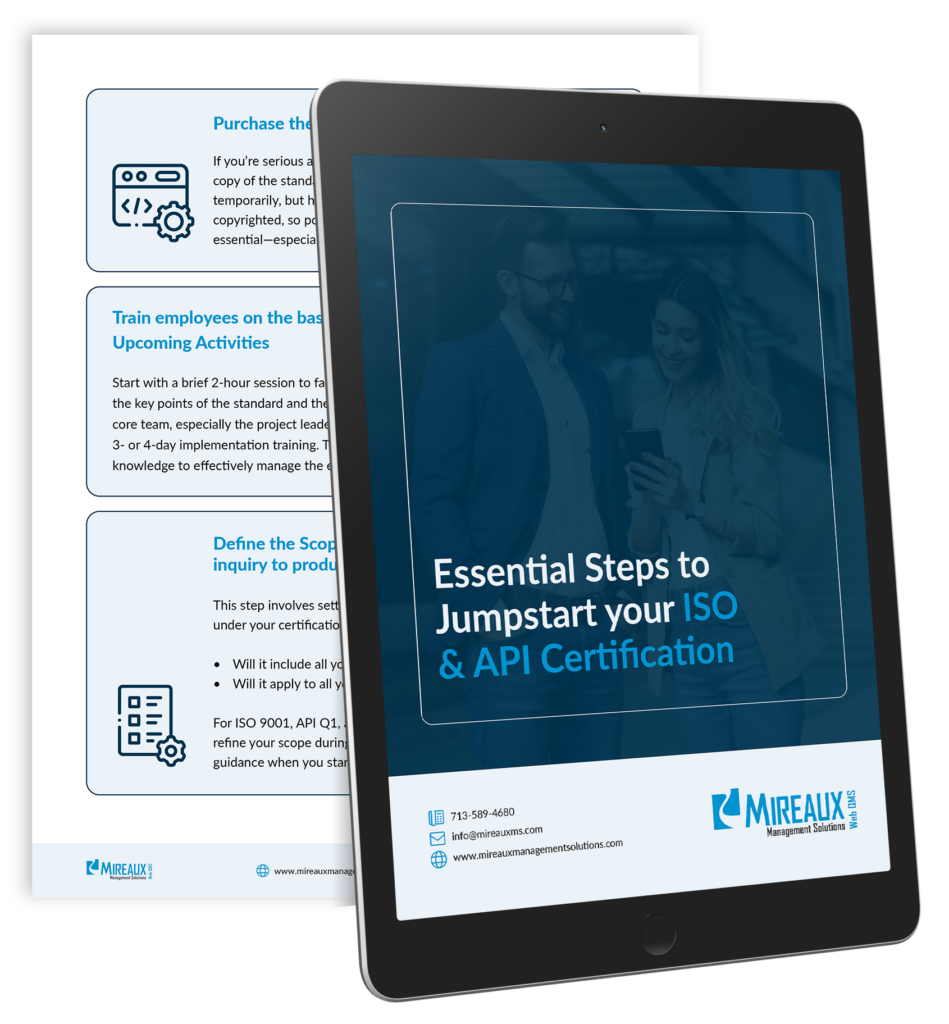
When a quality management system is implemented, results are evident immediately: reduction in warranty cost, reduction in rework, reduction in scrap, higher profit margins, etc. Would you agree that ISO and other quality initiatives such as Lean, Six Sigma, 5S can significantly improve any company’s processes -if requirements are correctly implemented? Why, if you know that a good quality management system improves your processes, are you then reluctant to include all company processes in this system? Why would most companies barely include sales on any quality initiatives? If and only if you apply the same ISO and quality concepts to the entire Sales process, inside and outside sales, you stand to see significant improvements.
The truth about Sales and Quality
When talking about Sales there are two distinctive areas that most companies can relate to, Inside Sales and Outside Sales. Inside Sales, is typically seen or appointed as the area where customer requirements are met and therefore Inside Sales gets a great deal of face time in ISO. However Outside Sales usually gets left out of the quality management system or is left to a minimum. In fact unless there is no other department handling customer requirements, they usually get a pass when it comes to ISO. Outside Sales usually is not included or participates in the quality initiatives.
“Every time we leave Sales out of our quality management system, we are then gambling with the company’s profit gate and leaving the process to the good hands of the sales experts alone.”
Why if we know ISO and other quality initiatives does improve processes, they are rarely included in the QMS? Most companies just don’t think of Sales as anything that can be improved using the same principles, insofar as the extent of obtaining customer requirements. Perhaps we think Sales is an art and better left to the Sales experts. However every time we leave Sales out of our quality management system, we are then gambling with the company’s profit gate and leaving the process to the good hands of the sales experts alone.
ISO’s impact on Sales
While an argument could be made that ISO 9001 indirectly affects Sales as a whole, we can truthfully narrow the direct positive impact to a few areas. The following spreadsheet provides a list of key ISO requirements and their ultimate impact on Sales.
| ISO/Quality Requirement | Purpose | Impact in Operations | IMPACT ON SALES |
| Quality Policy | Set company direction | Increase employee’s pride | |
| Quality Manual | Summary of processes and procedures | Better presentation of processes | Showcase of company processes |
| External Audits | Monitor QMS and keep certification | Eliminate deviations and promote adherence to policies and procedures | Maintain orders or obtain new orders from customers who require ISO 9001 |
| Focus on customer satisfaction | Monitor customer satisfaction | Make decisions to support improvements | Increase in repetitive business |
| Tracking of objectives | Monitor QMS performance | Improve efficiency of processes | Increase profit margins |
| Procedures | Normalize processes | Improve consistency and reduce process errors | Increase profit margins |
| Corrective and Preventive Action | Correct or prevent systemic issues | Improve overall process | Decrease customer returns or complaints |
Mapping the Sales Process
So are you ready to include your outside Sales processes in your Product Realization processes? The first thing you need to do is map your processes. Here is a good example of what a simple sales process may look like. The inputs and the outputs are depicted in black. The outside sales process steps are depicted in blue. The arrows show the sequence and interaction. In this case we are assuming the process happens in a straight line.

The benefits of a straight line is that you are forcing the process to go a certain way, and although adjustments may be made if you get the contract after the inquiry handling step, the idea of mapping the process is that you do not submit a proposal unless you have conducted a presentation -and not after the first inquiry handling step.
In order to explain this better, let’s look at each step in detail. This will help you create a robust procedure for your sales process.
- Inquiry Handling: Here you can explain what you expect to be said upon receipt of a call or how you expect to answer an email. Obviously every case is different and every customer is different, however having some guidelines will help even the receptionist become a good sales call handler. Here is a couple of things you can also prepare:
- Scripts: Prepare scripts for answering calls by product or service type or for answering emails.
- Forms: Prepare forms that can be filled out by anybody who is receiving a call, such as Inquiry form, Pre-Quote, etc.
- Presentation: Depending on what kind of sales you do, presentation will most of the time work to your advantage. So this step should allow for either face-to-face presentations or online presentations. In either case you can let each sales person do some customization, however having a consistent and basic presentation, is key to ensuring everyone will show what is considered important.
- Proposal: This step should provides guidelines for providing a good proposal. Of course templates will also be necessary, to ensure that your sales team looks professional. Even if you submit proposals as part of an email, having a template will help maintain consistency.
- Closing: Follow-up in the form of emails, phone calls, etc. could be covered in this step. You could also implement logs to keep track of follow ups. Of course if you own a sales software, then the software should help you keep track of the follow up steps.
Benefits to Expect
The following chart shows the benefits that you should see after mapping and defining each step of the sales process.
 Quality Objectives
Quality Objectives
Ok, we all have heard of “increase sales by 50%”, and we all know that is not exactly a quality objective. So what could be a quality objective for the Sales department? Well, once you have mapped the process and outlined the procedure and created any associated form and templates, you need to setup objectives to help you measure if your Sales process is actually performing well.
Here are a few sample objectives that could go with the process above:
- Proposal turnaround time: i.e. 15 days from inquiry.
- Presentation turnaround time: i.e. 7 days from inquiry.
- Decrease proposal errors: 0 changes on proposal due to wrong or misinterpreted requirements.
- Improve rate of inquiries to presentations: i.e. 90% of inquiries handled translate into quotes.
Yes, some of these metrics will make your Sales team work hard, but isn’t that every employee’s duty, to work hard in order to achieve their goals? Also, no, you should not have to hire a new employee just to keep up with your metrics. So define the metrics that apply to your company, measure what means more to you and concentrate on what can actually improve your sales process.
Sales needs to be included in your product realization processes period
When was the last time your sales department participated in a management review? When was the last time your sales department used the corrective and preventive action system? When was the last time your sales people had a formal review or had a defined training plan? When was the last time Sales was involved in Quality? If the answer is never, then how in the world do you want ISO and quality to help your sales? It only starts when you allow this to happen.
Of course the case presented here may work for some organizations and not for others and may apply more to some organizations and not for all. But I hope that it gives you a good idea that even your outside sales gurus could benefit from some basic process mapping, documenting and objective setting. After all is your organization and you have the right to make everyone and every process apply the same world class quality principles your company deserves.
If ISO is good for your processes, then make Sales become part of it!
Advance Your Knowledge with API and ISO Training from Mireaux University
Whether you’re preparing for certification or ready to take your team’s expertise to the next level, Mireaux training gives you the tools to succeed. Through Mireaux University (Mireaux-U) — our dynamic online learning platform — you can access course materials anytime, watch exclusive bonus videos, take your online exam, and download your certificate instantly. Experience expert-led training and real-world insights designed to empower your success. And link Mireaux University to this page:
ISO Training API Training



